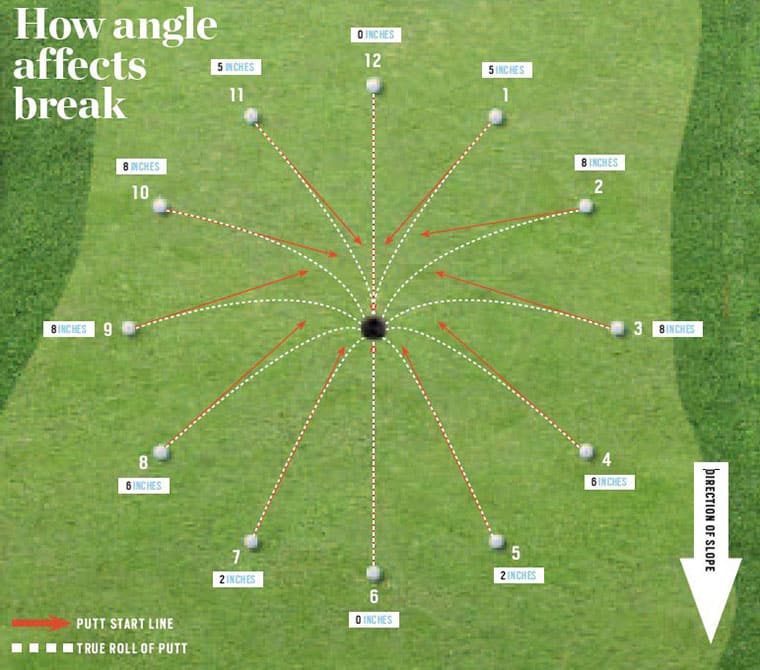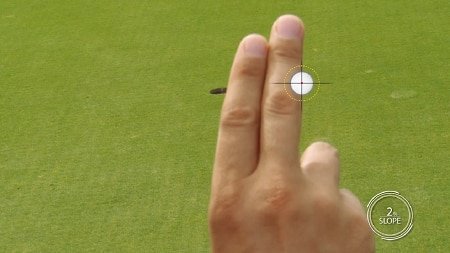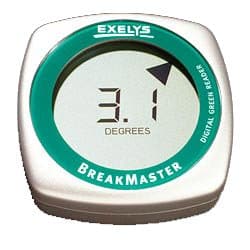Learn How To Putt With Your Fingers? Works Everytime - Aimpoint Baby!
One of the major skills in putting is learning how to read greens properly. If you are lacking in green reading ability, first off, you have come to the right place and chances are you are frustrated with your putting. The good news is green reading isn’t an innate power the golf gods have given to a select few. With just a little understanding and practice with aimpoint express read you will have an entire new appreciation for just how much break you weren’t seeing before.

Statistically golfers miss most of their putts on the low side. Reason being they are not playing enough break. Made popular by famous short game teacher Dave Pel’z he described the reason for this with the term”Invisible Break.” The first 4-5 feet of a putt! is often overlooked by the golfer. When you look up to watch the ball roll it is often past this 4-5 foot mark thus overtime this section of the putt is never taken into consideration when factoring the amount of break. Rather than relying so much on visual input, the aimpoint express read involves using your feet to judge the slope of the green. Immediately after impact the slope of the green will start pulling the ball. When reading the greens the trick here is not to confuse the apex with starting line. The correct starting line to an under-reader will seem to them as if they are playing WAY to much break.
The aimpoint read goes a step farther and gives a specific visual indicator to just how much break the putt will have. Which solves the invisible break problem and gives you more confidence in your existing read or suggests a probable alternative.
Requirements for an accurate Aimpoint express read
What is the length of the putt You can easily determine the length of the putt while walking about the cup.
What is the slope. The most effective way to find slope is not by looking at it but to feel it in your feet. Generally speaking pin locations will have a slope of somewhere between 1 and 4. Very rarely will you have a completely straight putt and a 4 degree slope. The most common slope you will encounter is 2. Matching the slope degree with your feel in your feet will take some practice. A digital breakmaster level can rapidly improve this skill.
What is the Stimp of the green. The course greenskeeper usually stimps the greens to have them running at a consistent green speed. However the pro shop rarely has this figure accurately so its important to develop a personal stimp reading technique to learn the speed of the green. Every courses green speed is different and adapting your stroke to the speed of the green is very important to getting the right feel for the read of the green. All aimpoint express reads are figured to have the ball roll 6-10 inches past the cup.
Now its time to get the Aimpoint express read.

It will be helpful to understand 1 finger will represent 1% slope. Using the breakmaster digital green reader 1 degree roughly is equal to 1.7 slope %. Standing directly behind the ball, you will use how ever many fingers you have calculated the slope to be to find the starting line. It helps to close one eye. Place one side of your finger the edge as the other side will indicated how much break you should play. If you are inside 8 feet start from the center of the cup. Without a digital green reader used in the practice rounds you can get good at determining the slope% based on how the green feels between your feet at different sections of the putt.
The faster the green the more you will need to bend your elbow. This will bring your fingers closer to your eyes thus giving the impression of more break. As a general rule faster greens will break significantly more than slower greens. Similarly, uphill putts break less than downhill.

Aimpoint express should be added to your pre-shot routine to add more trust to all your reads. It takes no longer than 30 seconds to complete. It is a very reliable athletic method that will add consistency to your green reading. Just remember its more an art to get the exact slope and finger positions.